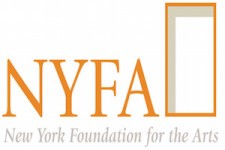Home » Newsletters » 2014 News » American Art Newsletter
Xavier Cortada


Art in the Anthropocene
by Alan C. Braddock and Renée Ater
American Art, Vol. 28, No. 3 (Fall 2014), p. cover2.
Published by:
The University of Chicago Press on behalf of the
Smithsonian American Art Museum
In 2007 the Miami-based artist Xavier Cortada produced Astrid, a small abstract
painting consisting of liquid splotches of blue pigment in a grainy, grayish-white
field on paper (fig. 1). The work recalls postwar expressionism of the New York
School or later post-painterly abstraction, but such associations only scratch the
surface of the picture’s meaning. The more we learn about the artist, his
materials, and the context of production, the more we recognize this to be a
work of our time, even as it gestures to the past and future…
This may seem like a lot for one small painting to address, but Astrid does so at
multiple registers. It creatively conjures the aerial maps and satellite images
that scientists such as Rignot use to represent the increasingly unstable
environment of Antarctica-a continent whose glacial disintegration has global
consequences. Areas of white lightly stained with blue in Cortada’s work
metaphorically suggest continental “landmarks” like the Thwaites Ice Shelf or
Pine Island Glacier Basin, which lately have begun to collapse into the ocean.
Viewed in terms of materiality instead of metaphor or
representation, Astrid functions as a token or specimen of a place undergoing
irrevocable change wrought by human actions elsewhere-especially actions
associated with Western modernity since the Industrial Revolution. As the artist
informed us:
With the ice paintings, I wanted to melt the very ice that threatened to
(melt and) drown my city [Miami]. The work, beautiful and serene, would be
a precursor of horrors to come. . . . I melted the ice on paper to create the
works, adding paint and sediment. The works were made in Antarctica,
about Antarctica, using Antarctica as the medium (provided to me by the
very researchers who inform us about Antarctica).4
With its expressive abstraction, Astrid recalls the heroic dynamism of American
art about 1950, at the apogee of U.S. cultural modernism and military power,
but its aqueous sensibility also suggests the dissolution of those human
institutions amid global climate disruption-to which Americans until recently
have contributed more than any other people. This interpretation takes on added
significance in light of the growing scientific consensus that Earth has entered a
new geological epoch, the Anthropocene, distinguished from the preceding
Holocene by the fact that humans since the nineteenth century have become the
primary drivers of environmental change on a planetary scale. In describing this
historic development, scientists associate the post-World War II period with a
“Great Acceleration” of anthropogenic transformation.5
Cortada’s Astrid provides a fitting introduction to these issues and this series of
commentaries, highlighting the significance of ecology as a key concern not only
in American art today but also as a defining idea in the history of modernity writ
large-an idea whose comprehension demands our acceptance of environmental
change as an irrevocable fact of life.
To read the full article
click here.
Ice Painting Exhibits
9/27/2014 – 1/4/2015: “Glenbow Museum (Calagry, Canada): Vanishing Ice: Alpine and Polar Landscapes in Art, 1775 – 2012” (Calagry, Canada)
11/19/2014 – 2/1/2015: 30 Years on the Road: ArtCenter | South Florida (Miami Beach, FL)
Other exhibits during Art Basel 2014
11/12/2014 – 12/17/2014: Littoral Creatures Exhibit at Broward College Gallery (Pembroke Pines, FL)
11/20/2014 – 1/15/2015: Urban Arts International Art Exhibit (Coconut Grove, FL)
12/3/2014 – 12/7/2014: Art Basel 2014: FREEDOM celebrates 10th Anniversary of
Cortada’s MIAMI MANGROVE FOREST (Wynwood Arts District, Miami, FL)
12/4/2014 – 12/7/2014: Art Basel 2014: Footsteps to Freedom (Wynwood Arts District,
Miami, FL)
Please make your charitable
donations to the New York
Foundation for the Arts, fiscal
sponsor of Xavier Cortada’s
Participatory Eco-Art Projects,
and help engage audiences in
addressing global climate change concerns.
